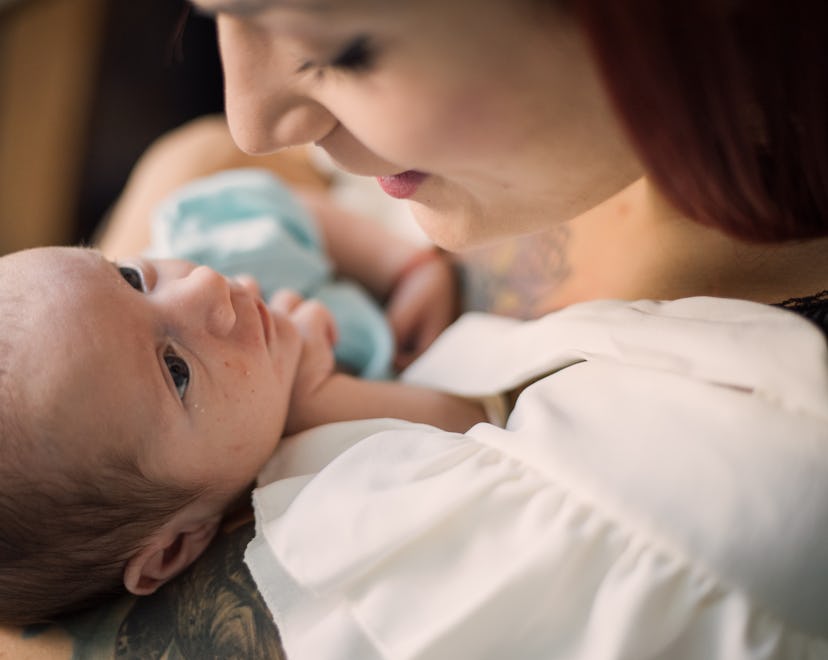Who Knew?

Do You Always Cradle Your Baby On Your Left Side? Here’s Why
It’s science.
When you have a newborn, you get a little lost in the haze. You’re behind on sleep and learning how to wash bottles, make food for yourself, and do all sorts of other things one-handed. What you may not have noticed is that, chances are, your baby is usually in your left arm. The reasons for why you hold your baby on your left side are up for debate, but experts agree that the phenomenon — called left-cradling bias — promotes bonding between parent and baby.
“About 60 to 90% of parents do hold their new babies on the left,” says Dr. Shacara Wilson, M.D., family physician at Bayfront Health. “Scientifically I think we're searching for reasons why, but I do believe it comes down to instinct and intuition in regards to the bonding process.”
So, why does your brain seem hardwired to want your baby on your left side all the time? Well, no one knows for sure, but there are some theories floating around.
Holding your baby on your left side is your brain’s way of bonding.
Having your baby to your left and looking down into their eyes is the perfect position for that eye contact to stimulate the right side of the brain — both for parents and babies, Wilson says.
“One of the theories is when we’re holding our babies on the left, it’s stimulating more the right side of their brain. That's the attention side of the brain [where we process] learning and memory. Holding our infants and looking at them, and even just talking with them, this is all a part of the bonding process for us and for them,” she says.
There is also a theory that holding baby on the left side allows them to hear your heartbeat, which is soothing, since it was also their soundtrack in the womb, Wilson says. And, of course, the majority of people in the world (70 to 95%, according to Scientific American) are right-handed, so perhaps keeping your dominant hand free plays into the left-sided bias as well.
“I just thought it was personal, that it was just because I was right-handed and it was what was more comfortable, but looking at the science, it looks like it could be instinctual and brain driven,” says Elizabeth Pletz, BSN, RN, IBCLC, IMH-E, nurse home visitor with the Nurse-Family Partnership at Le Bonheur Children’s Hospital. She visits newborns and their parents at home after birth to answer questions and make sure all is well, so she knows a thing or two about the bonding phase. She says the rates of left-handed people holding their babies on their left side are about the same as right-handed people doing so. It seems that your dominant hand isn’t the determining factor on where you prefer holding your little one.
In short, no one knows for sure why left-cradling bias is such a universal thing, just that it seems to be part of the brain’s way of connecting with your new little one.
It’s not the only way to grow that attachment between parent and baby, Wilson says. Holding your baby close where they can smell you — and chatting it up with them — also help. “Infant vision is not the greatest initially, and they utilize the sense of smell. So the holding process helps them recognize, who are my caregivers and my family? Reading to our infants and just speech and talking is very important in the bonding process as well,” she says.
Pletz says there are numerous ways parents’ and babies’ bodies interact that we’re not consciously aware of. For example, when you hold your baby close, their presence stimulates hormones that cause your breast milk to let down. And one of the best ways to bond with a new baby, she says, is by spending time skin-to-skin. When you’re all done cuddling up and ready to put baby down for a bit, Wilson encourages parents to place them in a safe sleep space.
Experts:
Dr. Shacara Wilson, M.D., family physician at Bayfront Health
Elizabeth Pletz, BSN, RN, IBCLC, IMH-E, nurse home visitor with the Nurse-Family Partnership at Le Bonheur Children’s Hospital
This article was originally published on